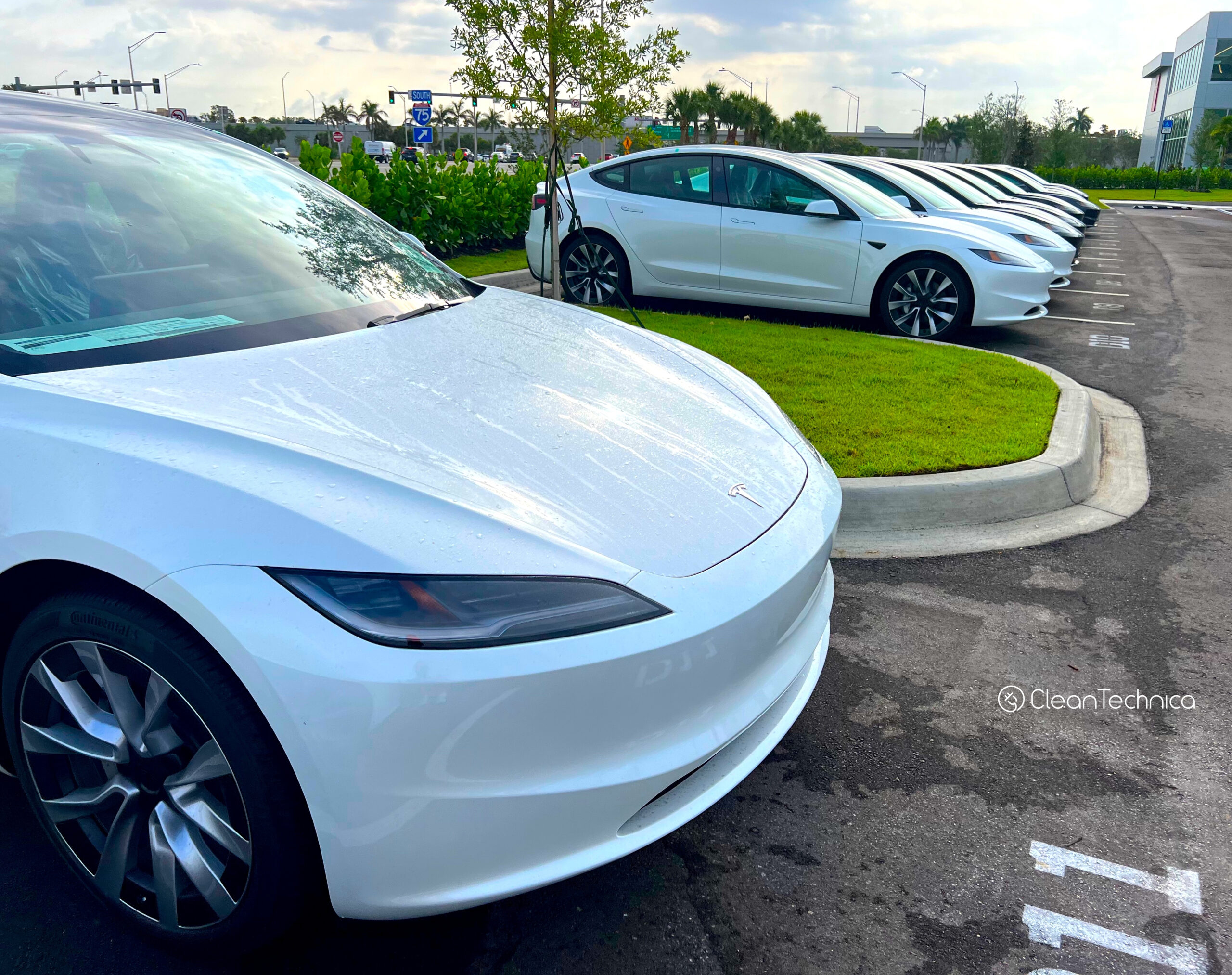Sign up for daily news updates from CleanTechnica on email. Or follow us on Google News!
An organized movement against rural solar development has been swelling up across the US, partly fueled by stakeholders in the fossil energy industry. Now solar developers are pushing back, and they have just launched a powerful new alliance with conservation groups as well as tribal organizations, agriculture stakeholders, utilities, and other interested parties. Game on…
Who’s Afraid Of Rural Solar?
To be clear, the practice of felling virgin forests and steamrolling over sensitive native habitats to install acres of solar panels is not a particularly helpful solution in the context of the looming biodiversity crisis. However, much of the organized opposition to rural solar development has focused on the issue of farmland conversion.
One is tempted to ask where these newly birthed rural solar opponents have been hiding while housing developments, corporate campuses, warehouses, and other elements of the built infrastructure have run amok over the amber fields of grain, but that is also beside the point.
In terms of farmland conversion, the arguments against rural solar ignore the fact that the industrialized, monoculturized, chemical-heavy nature of the modern American farm has already converted millions of acres of native habitats into shells of their former selves.
The reliance on diesel-powered equipment, the rise of energy sucking factory-type livestock operations, the copious use of plastic in modern farming, and in particular, the growth of the energy crop industry further undercut the argument that farmland should be broadly immune to solar development.
Also pounding a nail in the coffin of the anti-solar argument is the emerging field of agrivoltaics, which deploys solar panels to coexist with grazing lands, pollinator habitats, and human food crops, enabling farmers to continue working the land while also realizing income from the solar array.
A New Coalition To Support Rural Solar
Where were we? Oh right, a new alliance in support of rural solar aims to pull the rug out from under the opposition, in part by beating them to the land conservation punch.
The effort was organized under the umbrella of the Solar Uncommon Dialogue initiative of the Woods Institute for the Environment at Stanford University in partnership with the Solar Energy Industries Association (SEIA) and The Nature Conservancy.
The solar effort is one in a series of Uncommon Dialogue programs, and these are no ivory tower academic exercises. A previous group on hydropower and river conservation won $2.3 billion worth of federal funding to implement their recommendations, and the solar team is aiming for a similar impact.
The solar discussions resulted in an agreement to develop a best-practices framework for resolving conflicts over solar development, land conservation, and community concerns.
“Over the next 10 years, U.S. solar energy output is expected to increase five-fold, helping to address climate change and bring clean and affordable energy to more communities,” SEIA noted in an embargoed press release shared with CleanTechnica by email. “The rapid increase in utility-scale solar also means that the industry must address various issues, including agricultural land conversion, wildlife and habitat impacts, and community engagement.”
“The Solar Uncommon Dialogue agreement stresses that the development of large solar projects must be transparent, equitable and efficient and acknowledges that this will require many trade-offs.”
Next Steps For Responsible Solar Development
Now comes the hard part. “The signatories are convening six working groups that will address key issues and opportunities including community engagement, siting-related risk assessment and decision-making, energy and agricultural technologies, tribal relations, and policy solutions,” SEIA explains. Public participation, solar siting, regulatory issues, financial incentives, and information sharing are among the key elements to be hammered out.
SEIA, for one, seems to have gotten the memo about bringing local stakeholders on board. “As the solar and storage industry grows, it’s critical that we prioritize local engagement,” explains Abigail Ross Hopper, SEIA president and CEO. “We’re confident that by thoughtfully addressing stakeholder concerns from the start, we’ll be able to deliver the equitable clean energy future we need to see.”
That remains to be seen, but the solar group has some heavy hitters on its side. In addition to The Nature Conservancy, the initiative has enlisted other high profile conservation groups including the Audubon Society and the Natural Resources Defense Council.
Also on board are American Farmland Trust, Appalachian Voices, Association of Fish and Wildlife Agencies, Climate Adaptive Infrastructure, EDP Renewables, energyRe, Intersect Power, Invenergy, Land Trust Alliance, Lightsource bp, National Wildlife Refuge Association, North American Indian Center of Boston, Pine Gate Renewables, The Lyme Timber Company, Theodore Roosevelt Conservation Partnership, Union of Concerned Scientists, and WE ACT for Environmental Justice.
Farmers Are Hearting Solar Panels
On its part, American Farmland Trust already has a headstart through its Smart solar program for rural solar development. The organization was founded in 1980 with the mission of preserving farmland. With a focus on sustainable practices, AFT embraces beneficial technology including solar panels.
“Smart solar guides solar development to where it has the least negative impact on land well suited for farming, ensures that agricultural land where projects are sited can be farmed in the future, and promotes ‘agrivoltaics’ solar projects to create opportunities for both farming and solar energy on the same land,” AFT explains. “If done well, Smart Solar projects can provide income for farmers and landowners and protect land well-suited for agriculture.”
No word yet on whether or not the US Department of Agriculture is interested in joining the collaboration, but the agency also seems to be running ahead of the curve. USDA has been supporting rural solar projects since the Obama administration and it has raised the stakes with an assist from the 2022 Inflation Reduction Act.
Among other activities, USDA has also expanded its Emerging Farmers program to explore the potential for making land available for growing vegetables within rural solar arrays, with a focus on new farmers and newcomers to the US, with the support of Connexus Energy, Great Plains Institute, and Big River Farms. The US Department of Energy is also chipping to support the program as well as other agrivoltaic research.
Where’s Congress?
Of course, no news about accelerating solar adoption in the US would be complete without a mention of Republican leadership in Congress, or lack thereof. Two US allies — Ukraine and Israel — are under threat, while the Republican-led House of Representatives plays Whack-a-Mole with their own leadership.
For those of you keeping score at home, House Republicans fired Speaker Kevin McCarthy of California from his Speaker of the House role on October 4 without a replacement. Seven days later they finally managed to eke out a nomination for Representative Steve Scalise of Louisiana on the afternoon of October 11. As of this writing (that same afternoon), Scalise still needs 217 votes to win the Speaker’s gavel, which he hasn’t got.
Meanwhile, the razor-slim Democratic majority in the Senate has been handcuffed by rules that enabled Republican Tommy Tuberville of Alabama to single-handedly hold up hundreds of military promotions, while his Republican colleagues Rand Paul (Kentucky), JD Vance (Ohio), and Ted Cruz (Texas) have forced the State Department to drift along the explosive chain of current events with top positions unfilled in the Middle East and elsewhere.
So much for the party of American Exceptionalism. If you have any thoughts about that, drop us a note in the comment thread.
Follow me @tinamcasey on Bluesky, Threads, Post, LinkedIn, and Spoutible.
Image (cropped): This chart illustrates the amount of land projected for rural solar development currently used for agriculture, compared to other land available for solar development (courtesy of USDA).
Have a tip for CleanTechnica? Want to advertise? Want to suggest a guest for our CleanTech Talk podcast? Contact us here.
EV Obsession Daily!
I don’t like paywalls. You don’t like paywalls. Who likes paywalls? Here at CleanTechnica, we implemented a limited paywall for a while, but it always felt wrong — and it was always tough to decide what we should put behind there. In theory, your most exclusive and best content goes behind a paywall. But then fewer people read it!! So, we’ve decided to completely nix paywalls here at CleanTechnica. But…
Thank you!
Tesla Sales in 2023, 2024, and 2030
CleanTechnica uses affiliate links. See our policy here.





